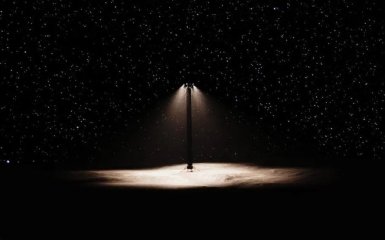The US government has announced that it has selected the Californian technology company Honeybee Robotics to develop the so-called LUNARSABERs — lunar-assisted navigation with advanced remote sensing and autonomous radiation for energy redistribution.
Lighthouses will be built on the Moon
A company from the USA intends to build 100-meter lighthouses on the Moon, which can be of great importance to astronauts.
As Talker writes, the US government has announced that it has chosen the Californian technology company Honeybee Robotics to develop the so-called LUNARSABERs. It is "Lunar Assisted Navigation with Advanced Remote Sensing and Autonomous Radiation for Energy Redistribution."
Simply put, we are talking about giant lanterns or beacons that will show the way to astronauts. But this is not the only thing they will be able to do.
Honeybee Robotics has been selected as part of a 10-year program by the US Department of Defense's DARPA research and development agency to study the capabilities of lunar architecture. This structure within the US government is responsible for developing the latest technologies for military use.
LUNARSABER will be over 100 meters tall. These structures will simultaneously be able to integrate solar energy, store and transmit it. They will also provide communication support, a mesh network and the PNT system — positioning, navigation and synchronization. In addition, these beacons will act as a surveillance system, the report says.
During moonlit nights, LUNARSABER will also perform its direct function of illuminating the area.
This infrastructure will literally shine a light on new possibilities, increasing the time of operation of manned and robotic missions on the Moon, VP of Exploration Systems at Honeybee Robotics Kris Zacny explained.
According to him, LUNARSABER will allow astronauts to work even in the deepest craters on the Moon, where sunlight does not enter.
Zacny is convinced that implementing this system "changes the game's rules and paves the way for the prosperity of the lunar economy."
LUNARSABERs can also host the payload at the base of the system or be mounted on top of the mast to increase service range significantly.
A radio telescope will be launched to the Moon in 2025
The Lunar Surface Electro Magnetic Experiment-Night (LuSEE-Night) mission is a small radio telescope. The project is funded by NASA and the US Department of Energy, and scientists from several American universities are also participating.
The Dark Ages refer to the period after the Big Bang when the first stars and galaxies began to form.
According to Kaya Rothermund of the Lawrence National Laboratory in Berkeley, researchers are looking for potential signals of the Dark Ages.
The Earth's atmosphere, as well as terrestrial radio interference, drowns out this weak signal. As a solution, they see a flight to the far side of the Moon, where there is no atmosphere and terrestrial radio noise.
It is planned to test technological developments, such as antennas, to determine whether they will be functional in temperatures of -170 degrees Celsius. Night lasts two weeks on the Moon, so any lunar missions must consider this.

